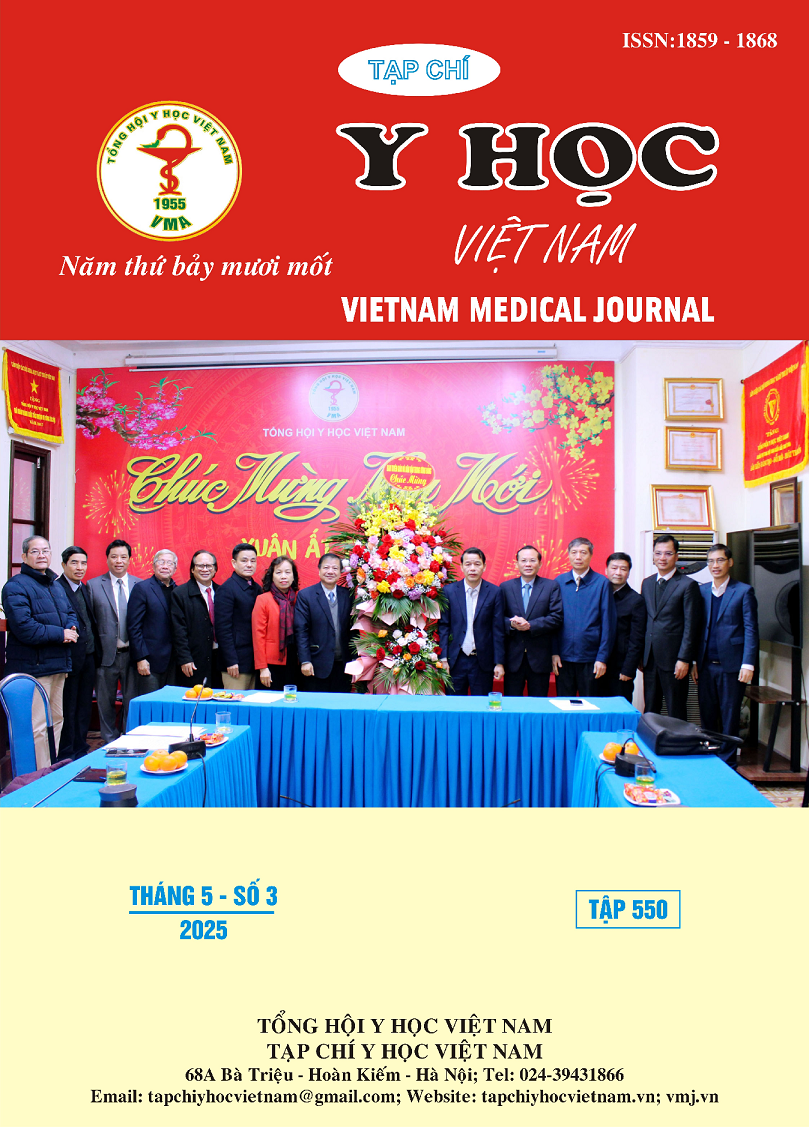ANTIBIOTIC UTILIZATION AND ASSOCIATED FACTORS IN THE TREATMENT OF PEDIATRIC PNEUMONIA IN CHILDREN AGED 2 MONTHS TO 5 YEARS AT A PROVINCIAL HOSPITAL IN KIEN GIANG, 2024
Main Article Content
Abstract
Background: Pneumonia is a common pathology in pediatric patients and a leading cause of mortality, especially in children under 5 years old. The administration of antibiotics in the treatment of pediatric pneumonia has significantly contributed to reducing mortality rates. Objective: To investigate the characteristics of antibiotic utilization, determine the appropriate usage rate, and identify associated factors in the antibiotic treatment of pediatric pneumonia at a hospital in 2024. Materials and methods: This was a cross-sectional descriptive study conducted on 280 inpatient medical records of pediatric pneumonia patients receiving antibiotic treatment from January 1, 2024, to June 30, 2024. The appropriateness of antibiotic use was evaluated based on the hospital's treatment guidelines, the Vietnam National Drug Formulary, and manufacturers’ drug information. Results: Among 280 medical records surveyed, 92.1% of cases received monotherapy. The most commonly prescribed antibiotics were cephalosporins, accounting for 91.39%. Antibiotics were predominantly administered via the parenteral route, with 99.64% of cases utilizing intravenous or intramuscular injections. The average duration of antibiotic use was 6 days. The initial appropriate antibiotic selection rate was 99.29%, while the rate of rational antibiotic use was 60.36%. The age group of patients under 12 months (OR (95% CI) = 2.1 (1.3–3.5)) and the use of combination antibiotics (OR (95% CI) = 4.6 (1.75–12.1)) were associated with irrational antibiotic use in pediatric pneumonia treatment. Conclusions: Cephalosporins were the most frequently utilized antibiotics, with a high proportion of monotherapy cases. The parenteral route was the primary mode of administration, and the average duration of treatment was 6 days. Patients under 12 months of age and the use of combination therapy were associated with irrational antibiotic use.
Article Details
Keywords
Pneumonia, antibiotic therapy, pediatric patients
References
2. Bộ Y tế (2022), Dược thư Quốc gia Việt Nam, Nhà xuất bản Y học.
3. Bộ Y tế-UNICEF-WHO. (2024), Hướng dẫn Xử trí lồng ghép chăm sóc trẻ bệnh, Quyết định số 2341/QĐ-BYT ngày 07/08/2024.
4. Nguyễn Thị Trúc Linh (2021), “Thực trạng sử dụng thuốc kháng sinh trong điều trị viêm phổi cộng đồng ở trẻ em dưới 5 tuổi ở Bệnh viện Nhi đồng Cần Thơ năm 2019-2020”, Tạp chí Y dược học Cần Thơ, số 37/2021.
5. Nguyễn Trần Kim Ngọc (2024). "Tình hình sử dụng kháng sinh kinh nghiệm trong điều trị viêm phổi cộng đồng ở trẻ em từ 2 tháng đến 5 tuổi tại Bệnh viện Nhi đồng Cần Thơ 2023" Tạp chí Y Dược học Cần Thơ, Số 75, trang 158-165.
6. Michael Harris. et al. (2011), British Thoracic Society guidelines for the management of community acquired pneumonia in children, Thorax. 66(Suppl 2): p. ii1-ii23.
7. Sara Rossin (2021), “Multistep antimicrobial stewardship intervention on antibiotic prescriptions and treatment duration in children with pneumonia”, PLoS ONE 16(10): e0257993.
8. Williams, D. J. C., C. B.; Walter, E. B. and et al. (2024). "Short- vs Standard-Course Outpatient Antibiotic Therapy for Community-Acquired Pneumonia in Children: The SCOUT-CAP Randomized Clinical Trial." JAMA Pediatrics, 178(1): e215547.


